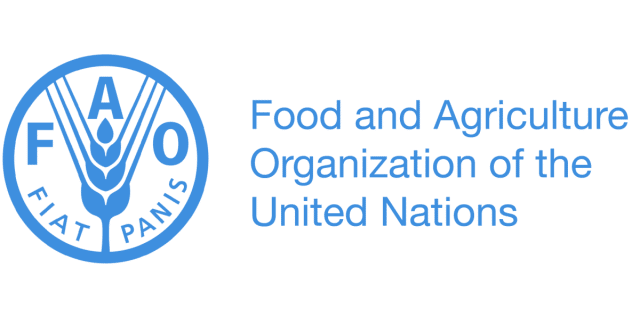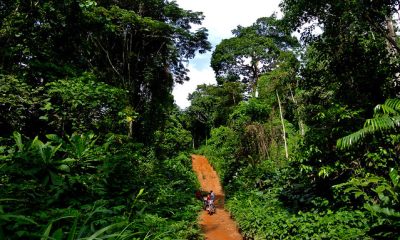EcoWatch
FAO Explains How Forests Can Assist Global Recovery From COVID-19, Climate, Other Shocks

Food and Agriculture Organisation (FAO), a United Nations agency, says forests can help the world recover from the impact of the multiple crises the world is facing including, COVID-19, conflicts, climate crisis and biodiversity loss.
It, however, argues that will only be ‘’if we step up action to unlock their potential.”
In a key report launched on May 2, the State of the World’s Forests Report 2022, FAO sets out three pathways for doing that: halting deforestation; restoring degraded land and expanding agroforestry and sustainably using forests and building green value chains.
“The balanced, simultaneous pursuit of these pathways can help address the crises facing people and the planet while also generating sustainable economic benefits, especially in (often remote) rural communities,” FAO Director-General QU Dongyu writes in the foreword to the report, subtitled Forest Pathways for Green Recovery and Building Inclusive, Resilient and Sustainable Economies and launched at the XV World Forestry Congress in Seoul.
Since the first World Forestry Congress was held in Rome in 1926, about every six years, the Congress has been providing a forum for inclusive discussion on the key challenges and way forward for the forestry sector.
In 1954, FAO was entrusted with supporting Congress preparations in close cooperation with the host country and proudly continues to do so today.
The 15th Congress is hosted by the government of the Republic of Korea, in Seoul, from May 2-6 2022. The Republic of Korea is a country that highly values its forests for their important ecosystem services, and for health and recreation, and have many lessons learned to share with the global community.
Under the theme of Building a green, healthy and resilient future with forests, the Congress will showcase the essential role of forests in the global sustainable development agenda – comprising, among other things, the 2030 Agenda and its Sustainable Development Goals , the Global Forest Goals , the Paris Agreement on climate change, the UN Decade on Ecosystem Restoration, and the post-2020 Global Biodiversity Framework – and it will identify key measures and recommendations for enhancing this role.
It will also highlight progress in the implementation of the recommendations made at the XIV World Forestry Congress in 2015.
Welcoming broad participation, the Congress aims to bring together thousands of people from all regions and sectors, including the public and private sector, non-governmental organizations (NGOs), civil society organizations (CSOs), scientific bodies, and forestry societies.
By unifying such a diverse group of people who care about forests and the environment, the Congress aims to encourage inclusive discussions, build new partnerships, and facilitate the mainstreaming of forestry issues into global agendas on sustainable development and post-COVID-19 recovery.
However, the pathways are put forward “on the understanding that solutions to interrelated planetary crises have immense economic, social and environmental implications that need to be addressed holistically,” Qu adds.
The key arguments of the report are that: Halting deforestation and maintaining forests could avoid emitting around 3.6 gigatonnes of carbon dioxide equivalent (GtCO2e) per year between 2020 and 2050, including about 14 percent of what is needed up to 2030 to keep planetary warming below 1.5 °C, while safeguarding more than half the Earth’s terrestrial biodiversity.
Restoring degraded lands and expanding agroforestry – 1.5 billion hectares of degraded land would benefit from restoration, and increasing tree cover could boost agricultural productivity on another 1 billion hectares. Restoring degraded land through afforestation and reforestation could cost-effectively take up to 1.5 GtCO2e per year out of the atmosphere between 2020 and 2050 similar to taking up to 325 million gasoline-powered passenger cars off the road each year.
Sustainably using forests and building green value chains would help meet future demand for materials – with global consumption of all natural resources expected to more than double from 92 billion tonnes 2017 to 190 billion tonnes in 2060 – and underpin sustainable economies with greater employment opportunities and more secure livelihoods.
Societies could make better use of forests and trees to simultaneously conserve biodiversity, better provide for human well-being, and generate income, particularly for rural people, the report says, arguing that “there will be no healthy economy without a healthy planet.”
But, current investment in forests falls way short of what’s required. According to one estimate, total financing for the forest pathways needs to increase threefold by 2030 and fourfold by 2050 for the world to meet climate, biodiversity and land degradation neutrality targets, with the estimated required finance for forest establishment and management alone amounting to $203 billion per year by 2050.
Ways forward along the pathways
The report says the ways for swiftly moving along the pathways may include:
Directing funding for recovery towards long-term policies aimed at creating sustainable and green jobs and further mobilizing private-sector investment;
Empowering and incentivizing local actors, including women, youth and Indigenous Peoples, to take a leading role in the forest pathways;
Engaging in awareness raising and policy dialogue on sustainable forest use as a means for simultaneously achieving economic and environmental goals; and
Maximizing synergies among the three forest pathways and between agricultural, forestry, environmental and other policies and minimizing trade-offs.
The report cites a wide range of examples from around the globe, both demonstrating the vital importance of forests and trees to people’s livelihoods and pointing to supportive policy initiatives – from the key role of non-wood forest products in Turkey and wood fuel in and Georgia, to smallholder forestry in China and Vietnam, sustainable charcoal in Côte d’Ivoire and formalizing land rights in Colombia.
FAO’s forestry work
FAO’s Forestry Programme is focused on bringing about transformation that benefits forests and the people who depend on them and helping to achieve the 2030 Agenda for Sustainable Development and the Sustainable Development Goals.
FAO’s approach balances economic, social and environmental objectives to enable the present generation to benefit from the Earth’s forest resources while conserving those resources to meet the needs of future generations.






